CULTURE
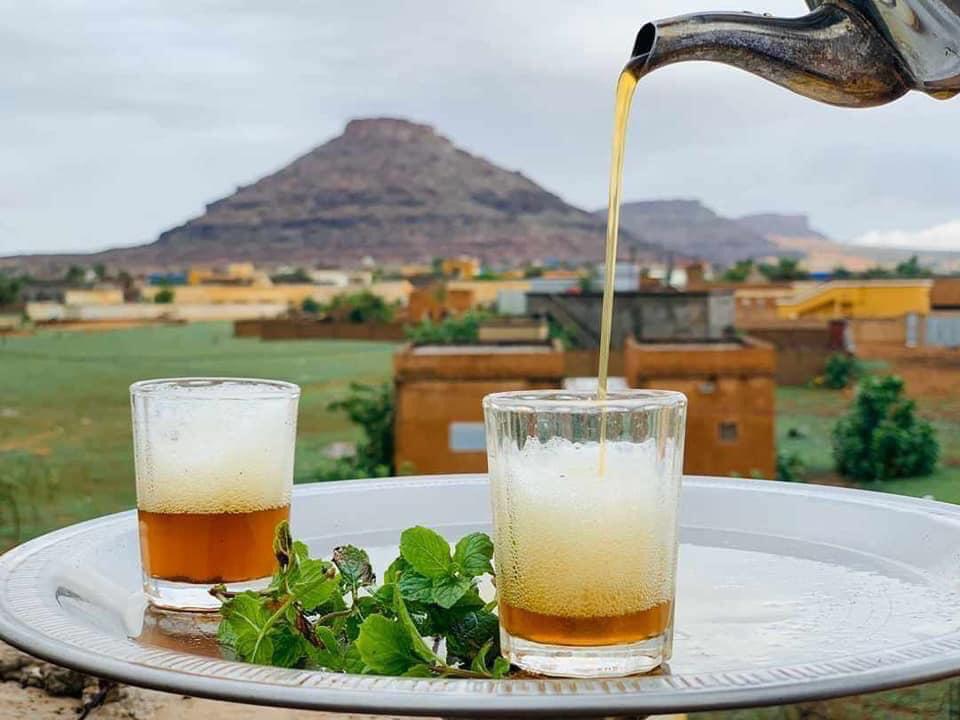
The first traces of human habitation in the area date back to the Stone Age. Black tribes from the south and east settled there and formed the first inhabitants of Mauritania, according to some researchers, while others believe that the Berber elements were the first to inhabit the region.
In the first millennium BC, Berber tribes from North Africa migrated to Mauritania and dominated the black population. These tribes brought with them horses and camels that facilitated trade.
In the eleventh century, the Almoravid movement arose in Mauritania, a branch of the Sanhaja. They learned Islam and began jihad against the Ghana Empire in 1076 from Mauritania and spread the Islamic religion in the Sanhaja tribes. Cities such as “Aoudogust” witnessed a religious and intellectual prosperity during this period. The Almoravids expanded in part of the Maghreb, Andalusia, and some areas of Africa.
At the beginning of the thirteenth century Arab tribes swept the country. Then, in the sixteenth century, the Arab tribes of Beni Hassan settled in Mauritania, and they came from Upper Egypt, but they faced strong opposition from the Berber tribes that were eventually controlled. These tribes mixed and gave the most important human group throughout Mauritania’s history, the Berber Arabs or the Maoris. The ancient Mauritanian society was divided into classes (the Zwaya / Arabs / Aznage / Haratines / blacksmiths) and each class had a role that distinguished it from the other. In Mauritania, there remained an African population divided into three groups: the Soninke, the Fulani (Falata), and the Wolof, each with its own language, and there were also classes in them (the free, the slave, and the craftsman).
One of the French historians said that the word Mauritania is of Greek origin and means the land of Elbidhan (Maures) and they are the inhabitants of Mauritania.
Ancient cities
The four historical and archaeological cities in Mauritania, “Oulata”, “Tishet”, “Ouadane” and “Chinguetti”, differs markedly from their past, as the resources of life dried up in them from planting and udders, and their residents were dispersed, and their streets were devoid of tireless movement known in the days of their golden age centuries ago, when those cities were a radiological and scientific center whose fame exceeded the geographical space of those cities.
A group of historical Arab-Islamic cities are distributed along the map of the Great African Sahara, which did not receive that much attention in the Arab media.
Perhaps one of the most prominent of these historical cities and the most now in danger of extinction are the historical Mauritanian cities that the United Nations has launched an international appeal to protect from desertification and extinction. These cities are Walata, Tichitt, Ouadane and Chinguetti;
“The city of Walata fascinates the traveler Ibn Battuta”
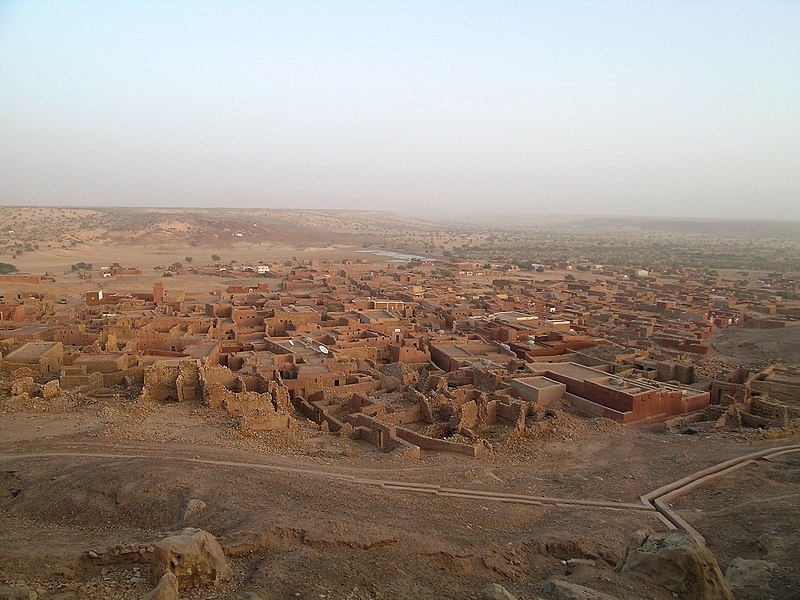
The history of the construction of the Mauritanian city of Walata dates back to the first centuries. It was initially called “Peru“, but it flourished with the advent of the Islamic religion, becoming a tie of desert trade. And the caravans became a starting point for the gold trade coming from Mali to the shores of the Mediterranean. It may be appropriate in this regard to mention that the Moroccan traveler Ibn Battuta visited Walata in the range of 726, so at the beginning of the fourteenth century, and he spoke on his journey about the extreme prosperity that this city knows due to its location between the Sudanese regions “Mali” and between Sijilmasa and the Moroccan oasis.
Ibn Battuta used to call the city “Wattene” (our Walata) on his journey, due to the way of definition and tween in the Berber language, which most of the city’s residents spoke at the time of his visit. Hence he took the name from them orally and used it while praising this city throughout many pages of his interesting journey.
Since the beginning of the sixteenth century, the city of Walata has known the beginning of a great intellectual renaissance, and it has become one of the most important centers of Arab-Islamic cultural radiation. A large number of scholars immigrated to the financial city of Timbuktu, which was known for its unrest. In the same circumstances, scholars and thinkers from Fez, Tlemcen and Marrakesh emigrated to it, as well as some of the people of Touat in southern Algeria, and some returnees from Andalusia, which finally fell into the hands of the Spanish, in 1492.
In fact, this huge and diverse number of immigrants provided the city with its cultural resources that have remained until now, and at the same time allowed it to transform during the past five centuries into a cultural and scientific and a capital of Maliki jurisprudence. We also find these various tributaries present in the magnificent architecture of the state.
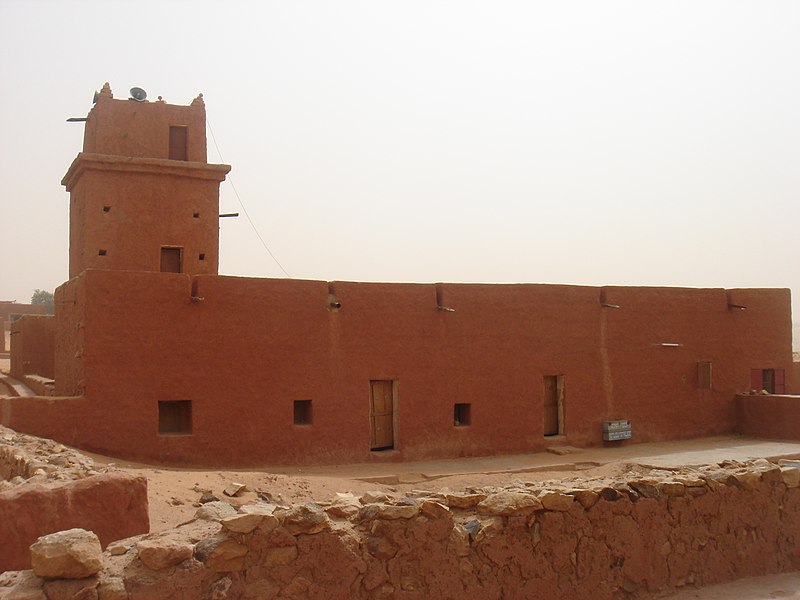
The city of Walata is now exposed, with all its ancient Islamic heritage, to drowning due to desertification and the encroachment of sand. This is the reason for the international campaign launched by UNESCO for the four Mauritanian historical cities. Although its provinces are the most vulnerable to the emigration of a large number of its inhabitants to the extent that they are no longer more than two thousand people now and they are more than tens of thousands since ancient times. Perhaps the only consolation in the survival of this Arab city is the activity of libraries and manuscripts supported to some extent by UNESCO and the Mauritanian Institute for Scientific Research. If the admirer of the culture of this nation does not remedy it, it will become extinct and become an impact for all.
“The city of Chinguetti, from which the Mauritanians took the title of Chenaguitta”
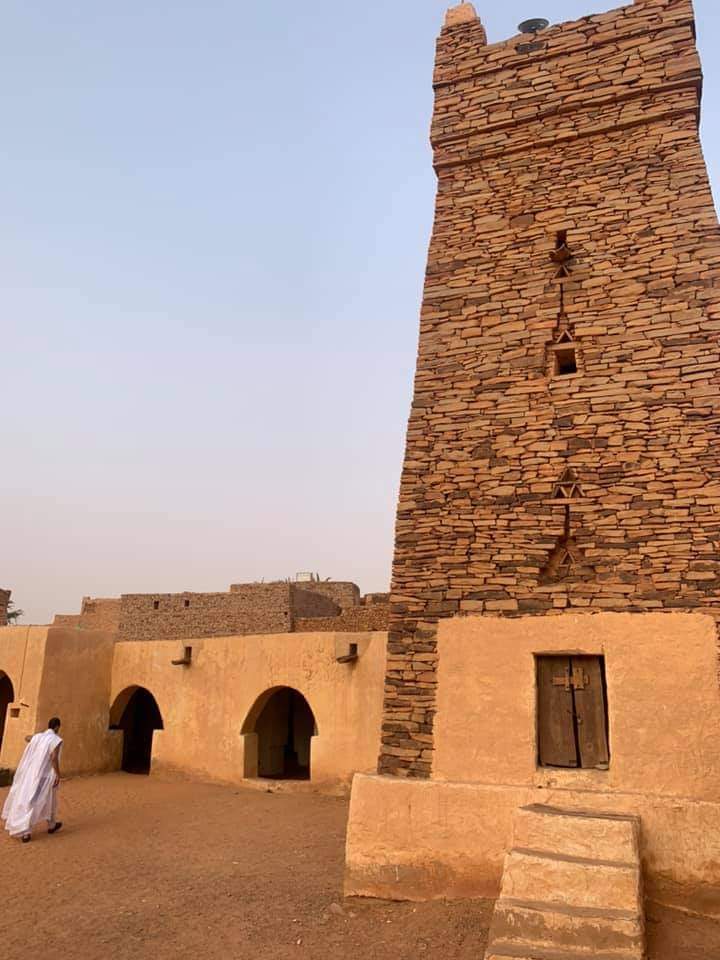
The city of Chinguetti is located on the back of Adrar (Mount of Lemtouna) on the southern border of the Mauritanian north. Its population ranges from 3000 people in the winter to more than 7000 in the summer (Elguetna season). The traditional economy was based in three foundations that are Palm oasis and its grains, then raising livestock, of which the population owned significant quantities, and finally the commercial activity due to the city’s location on the caravan route between Morocco and Sudan. The people of the city had three marketing and shopping directions: Sudan (Now Mali), Ouadnoun in southern Morocco, and the Senegalese city of NDAR.
“Foundation of the City “
Unlike other Mauritanian historical cities, the people of Chinguetti were not interested in codification, especially history. Therefore, we did not find books composed by the people of the city before the eleventh of Hegira century, four centuries after the founding of the city. Oral traditions were the most important sources of the city’s history and a vehicle for creating facts with legends. What historians of the city agreed on is that the first City of Chinguitti was founded near its current location in the year 160 H under the name “Aboirr”, which is a cursive diminutive of the word Biir (Hole), perhaps because its water is close to the surface.
One of the well that was digged by Abderrahmane Ibn Habib ben Abou Oubeide ibn Nava in the year 116 H was to link between Sijilmasa in southern Morocco and Aoudoghost near Tamchekett. The city reached the height level of its prosperity following the fall of the northern Almoravid state in 541 H and the displacement of the Sanhajas tribes that almost made up the Almoravid state in the south.
As for the second Chinguetti (present Chinguetti), the oral narrators inherited from its foundation dating back to the year 660 H (1262 AD) by four men: Muhammad Ghali bin Ibrahim, the grandfather of the tribe of Laghalal, Yahya Al-Alawi bin Abih, the grandfather of Idawaali, and Omar bin Ali, known as Omar bin Benni, the grandfather of Amkarij.
As for the written sources about this city, they are few devoted to mentioning the city. Abd al-Rahman al-Saadi mentioned in the history of Sudan that a man from Chinguetti, the Ajar al-Sinhajia tribe named Muhammad Nell was appointed by one of the kings of the state of Mali in the year 837 AH as governor of Timbektu.
As for the first thing that is relatively detailed, it goes back to the scholar Sidi Abdullah bin Al-Hajj Ibrahim in the year 1205 AH in papers he called Sahih al-Naql in the Alawiya idawaali and Bakriya Muhammad Ghali, most of which were copied by the owner of the mediator in an almost literal manner. Then Sidi Muhammad bin Habott (d. 1288 AH) wrote a history of the city that was summarized by his son Ahmed, who died in 1301 AH, and then detailed by his grandson, Sayyid Muhammad (d. 1952 AH) in a move he called the History of Takrurihib, as he expanded it to the broader Chinguetti space. However, the sources of all these writings were based only on Inherited oral traditions.
The city was not greatly affected by the conflicts that erupted between the tribes of Sanhaja and the tribes of Beni Hassan, and after the victory of these people, their rule of the city was only symbolic, if it was surrounded by an aura of holiness that would bring respect, so the new rulers became blessed with the city’s religious symbols.
“The city of Ouadane…and the street of the 40 Scientist”
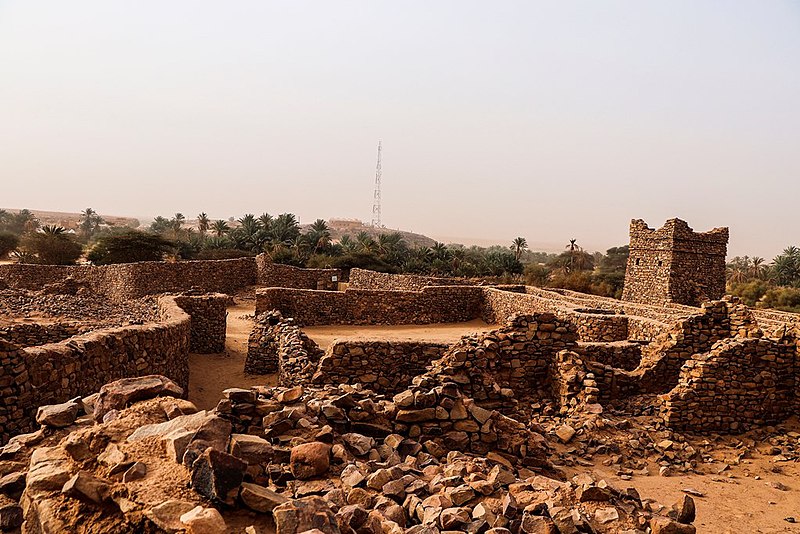
The founding of the city of Ouadan dates back to the sixth century AH, specifically in the year 536 AH, and popular historical accounts say: that the emergence of the city dates back to three righteous men who found – fate – at the foot of the mountain overlooking the city now – and that they agreed on the pilgrimage, and upon their return they settled there , due to its distinguished location – that is, the mountain – which is suitable for building a ribat that they had agreed to establish after their return from Mecca, and if this is the historical popular account of the founding of the city, then the scientifically reliable historical accounts say: The founder of the city is ElHajj Abdullah ElHajj Cheikh The Al-Haj tribe, which still resides in the city. He started building a wall around the city in the year 540 AH and continued working on it until the year 547 AH.
The city is built on the edge of a cliff and is considered a destination for tourists because of its stunning scenery and the ancient houses it contains.
Its commercial and scientific position
The eighteenth century, as well as the first three decades of the nineteenth century, was considered the golden period of prosperity for the city, and this was due to several factors that combined together, including the distinguished location in the heart of the desert, and the security and stability provided by the Ouadan Wall at a time when international trade across the desert was flourishing Unrivaled, caravans were passing through that desert carrying salt and flour, and grain heading towards the east, then coming from it. And it flourishes not only as an economic market and an important commercial station, but as a source of unparalleled civilizational radiation. Its scientific and cultural fame flew across the horizons, and its name began to shine as a strong competitor to other ancient cities that wore the guise of knowledge and culture in Morocco, such as Echinguitt, Fez and Kairouan.
Tichitt, the jewel of the desert
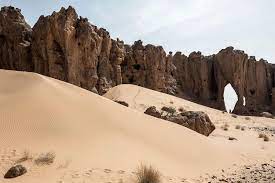
Tichitt was famous for its scientific, advocacy and commercial role in the African Sahel region. It is considered one of the cities classified as historical by UNESCO. It was founded by Sharif Abd al-Moumin in the year 536 AH. It is said that the reasons for calling it this name is that Shkarif Abd al-Moumin, founder of the city, found it well known, but when he saw it from the mountain that overlooked it, he liked its location. He said, Tichitt, which one did you choose?” The first thing he built was the mosque, whose minaret is 16 meters long. The city contains libraries rich in rare and important manuscripts. The manuscripts in the city are estimated at about ten thousand manuscripts.
“Tichitt a charm for the students of science”
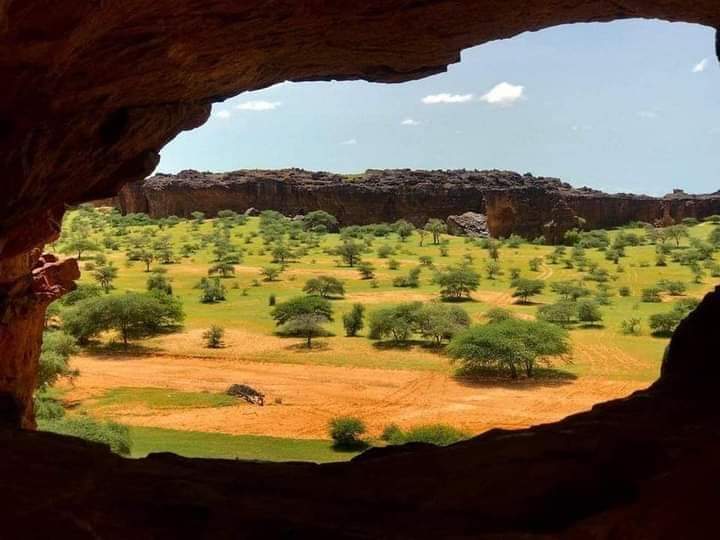
The city of Tichitt is one of the cities classified as a human heritage by UNESCO, characterized by beautiful architecture. The minaret of the city’s mosque and the remains of the ancient houses still tell the story of its beauty and depth of originality.
The city of Tichitt witnessed a distinguished scientific and cultural prosperity that made it a destination for students of science. The city was a starting point for caravans roaming the country in the north and south until the borders of brown Africa carrying trade from north to south and from south to north, thus creating scientific and commercial friction between them and the areas they pass through, and this friction was a source of scientific and economic wealth.
The efforts of the scholars of the city of Tichitt left a huge scientific wealth in which they deposited their manuscripts, revelations, and letters. However, these lines were deteriorated due to the hardness of time and the harsh drought that struck the country for a certain period.
